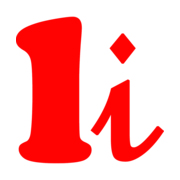When taken as a whole, trademark rights are regarded as separate in each nation or jurisdiction (hence, "jurisdiction") in which they are acquired, just like other intellectual property rights. Each jurisdiction has the right to acknowledge and defend trademark rights in a way that advances its policy objectives. The existence and enforceability of a collection of trademark rights collectively referred to as "international trademark rights" are specific to each jurisdiction and, generally, are not linked.
International Trademark Registration Overview
The enrolled trademark owners can enforce their rights across numerous countries with the help of international registration (IR). It is accomplished by submitting a standard, solitary application supervised and controlled by the International Bureau of the World Intellectual Property Organization. A trademark owner has the right to this designation per the Madrid System's rules.
The office of the contracting party evaluates the trademark application request to see whether it qualifies for further processing; if it does, the agency contacts the IPO in Geneva, Switzerland. The applicant must communicate with the trademark office, also referred to as the contractual party's office, to register an international trademark under the Madrid System. India is regarded as the Registrar of Trademarks for companies operating in India.
Madrid Protocol
The international trademark registration system is governed by the Madrid Protocol, which came into action in 1996, and the Madrid Agreement, which came into existence in 1891. A mark can be registered in several nations under the Madrid Protocol by applying for international trademark registration through the applicant's home country's ("office of origin") trademark office.
Process of International Trademark Registration
The trademark applicant must file an application for international trademark registration under the Madrid Protocol through the applicant's trademark office, also referred to as the office of origin.
The office of origin will process the trademark application before being submitted to the Intellectual Property Organization in Geneva. The place of origin for Indian businesses is the Office of Registrar of Trademarks, India.
If the trademark registration application is approved, the mark is registered in the International Register and made public in the WIPO Gazette of International Marks. The International Bureau subsequently issues a certificate of international trademark registration and notifies every Madrid Protocol contracting every country for whom the trademark applicant has requested protection. By alerting the International Bureau within the deadlines outlined in the Madrid Protocol, each national trademark office has the authority to decline the safety of the mark. The designated offices must lodge complaints within a specified 12- or 18-month window per the Madrid Protocol.
The International Bureau must receive any opposition to the trademark's registration using the designated forms. If none of the countries objects, the trademark will enjoy the equivalent protection as the trademark that the country's office has registered.
International trademark registration is valid for ten years after being registered under the Madrid Protocol. After ten years, international trademark registrations may be renewed directly through WIPO or the relevant office of origin.
Requirements for Obtaining International Trademark Registration
You must fulfil three necessary conditions for international trademark registration in India:
The applicant should be an India national or own a legitimate business or commercial enterprise in India to have an international trademark registration.
The applicant should have an Indian Trade Marks Registry national trademark application or registration for the mark.
The applicant should decide which or how many additional Madrid Protocol signatory nations they want to register their trademark in.
Advantages of Madrid Protocol Trademark Registration
Some benefits of submitting a trademark registration application under the Madrid Protocol are listed below:
One international application only needs to be submitted.
The application may be submitted in any of the three languages—English, French, or Spanish—regardless of the language of the contractual party.
Each foreign nation's government filing fees must be paid in India in the Swiss Franc, a single currency (CHF).
All applications are given a single registration number under the Madrid Convention, valid across all jurisdictions.
Your company can have an international trademark registration with the assistance of Lawgical India. Speak with a lawgical india business advisor right away!










